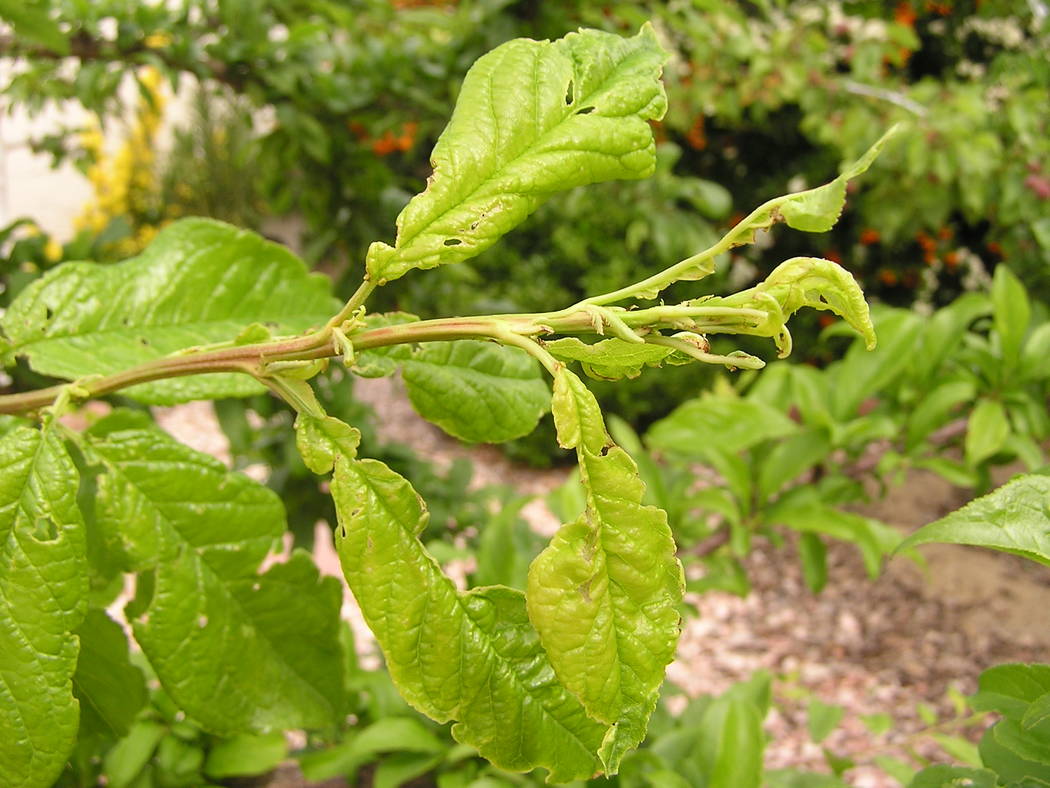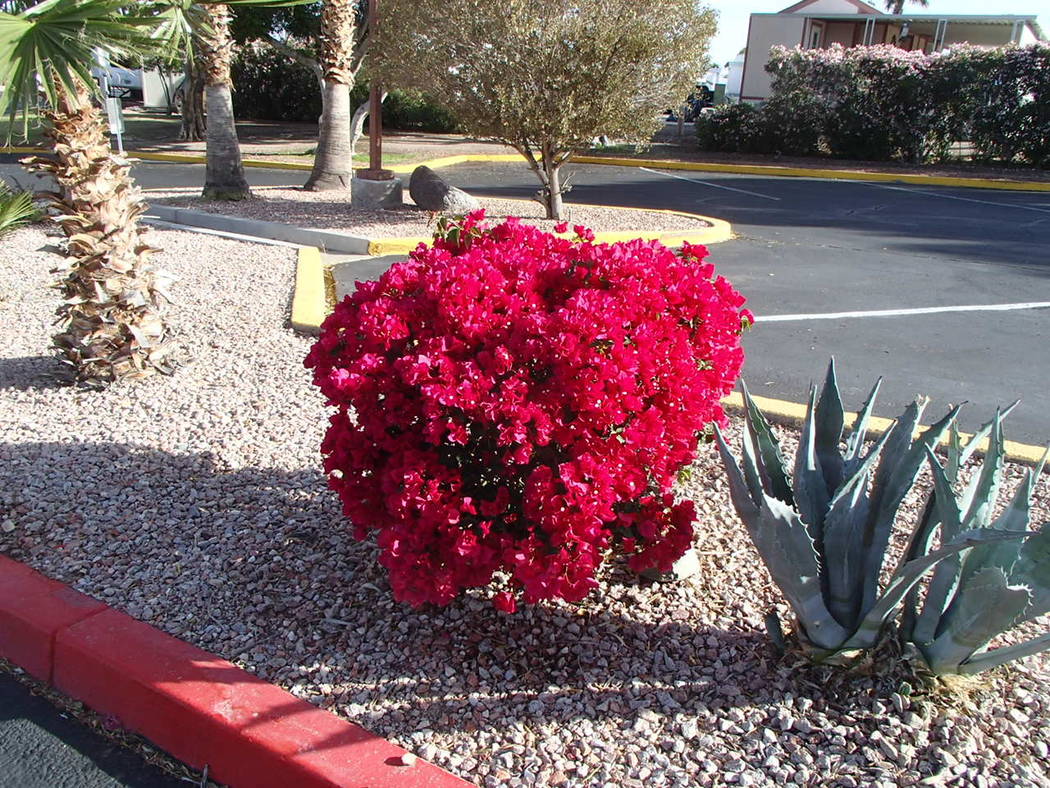High winds damage plants in Southern Nevada
Let’s talk about wind damage. If you didn’t sustain wind damage to your landscape, you are extremely lucky. It was fortunate these high winds occurred early in the season, and many trees were not yet full of leaves. If it had been a few weeks later, the damage would have been worse.
New leaves just coming out were shredded by those winds, or new young shoots were broken. You might not see the damage at first, but after a few days, the damage will turn brown.
Seeing this, you might think insects or diseases. Don’t worry. Some light pruning will remove the damage, and new growth will cover it in less than a week.
Branches and trunks of trees split or broke. If you think you can bandage the damage, think again. If the wood inside of the split has dried, even for a couple of hours, joining the two together will not heal the split. It’s a goner.
You might be able to salvage the tree by cutting below the break on the trunk. See if it will begin suckering beneath this cut. Make the cut about 1 foot above where you want new branches to emerge.
If a branch split, cut it back to a side branch. Whether it will grow back or how it will grow back depends on the kind of break, where it occurred and the type of tree.
Q: You mentioned that citrus trees are often grafted. Are full-size trees grafted like dwarf trees? Do I need to remove anything from these grafts? The only tree that really produced was a grapefruit, while my orange and tangerine trees produced very little over a span of nine years. They flowered in the spring and were protected from wind and freezing temperatures. Will I have more success in getting fruit from full-size trees?
A: All citrus bought from commercial nurseries are grafted with another tree. This grafting gives it a different set of roots. This new set of roots is called the rootstock.
Most fruit trees are not intentionally grafted to rootstocks to dwarf the tree. But some dwarfing can result from rootstocks that are not terribly fast growers. If the rootstock dwarfs the tree, it should be mentioned on the label.
There are five major citrus rootstocks, each with different characteristics that benefit the tree. A citrus rootstock might be added because of soil problems, disease issues, dry soils or survival during freezing temperatures. Knowing the type of rootstock can be extremely important to commercial growers with a certain set of growing problems.
Nurseries that buy citrus to sell in the Las Vegas market usually focus on rootstocks that survive freezing temperatures. A little of this tolerance to cold temperatures is passed on to the tree itself.
Look at the base of your citrus tree trunk. You will see a dogleg or bend (or noticeably swollen) where the two trees were grafted together at a very young age. Any shoots growing at or below this dogleg, called suckers, must be removed since this growth will not give you desirable fruit or benefit the tree in any way.
Remove suckers now and continue to remove them as soon as you see them. If you remove them when they are very young, they will break away easily from the tree. Don’t wait or let them get older or they will be more difficult to remove.
Older trees stop producing suckers from the rootstock if you start removing them early when the tree is young. But if the top is killed by freezing temperatures, the rootstock will start suckering, even from older trees, and produce a vigorous new tree from or below the dogleg. It looks pretty, but this “new” tree will have very poor quality fruit.
Many citrus flower and begin fruiting at the same time we have freezing temperatures. If your citrus is in a warm, protected spot you have a better chance of getting fruit. You can protect them with lights, blankets, burlap, etc., but if the temperature and wind are bad enough, protection will not guarantee fruit and a lack of damage.
The tree might require temperatures of 20 to 25 degrees Fahrenheit for damage to occur. All flowers and fruit, however, are killed at 30 to 32 degrees regardless of the temperatures required for tree damage to occur.
Citrus is “iffy” in this climate. Some years you might have fruit, other years you might not. Some years they might freeze to the ground and other years sail through the winter without damage. This is the nature of our climate and growing citrus here.
Q: I would like to know which freestone peaches are best for Las Vegas and are they readily available at our nurseries?
A: Generally speaking, the most reliable fruit trees for this area are available from local nurseries. Peaches should state on the plant tag if it is a cling-type or freestone. The trend in home gardening is toward freestone, so most nurseries will carry freestone types.
Fruit trees are limited in quantities this year, worse than past years as the trend toward growing your own food has grown and inventories sold out early. Nearly any peach will grow here. But the quality of fruit the trees produce will be different than the same fruit grown in other climates.
There are literally hundreds of varieties to pick from. It is not possible to list them all and tell you which is the best. Rely on knowledgeable staff. Stay with standard size or so-called semi-dwarf types if you are growing them in the ground.
Big trees are not always the best. Select trees that are moderate in size and have branches growing from the trunks in many different directions and at locations along the trunk 30 inches from the top of the container or lower.
Select miniature or genetic dwarf peach if you are growing them in a container. Generally speaking, full-sized trees have better quality fruit than miniatures or genetic dwarf.
Q: I came from Southern California where I had beautiful red and yellow bougainvillea that grew with little help. I tried to save my beautiful pink bougainvillea last year by moving it onto my patio close to the house. I covered it every night, uncovering it in the daytime. It appeared dead this spring but just now I see some very tiny green leaves close to the bottom. Do you think this bougainvillea can come back?
A: Yes, it will come back. Bougainvillea is a frost indicator plant. In other words, if the temperature drops 1 degree below freezing, you will see damage to this plant. If the temperature is freezing for several hours combined with strong winds, it will die to the ground.
Bougainvillea frequently dies to the ground; each winter it freezes and resprouts from its crown in the spring. The crown is where the top attaches to the roots and grows just below soil level. After the first freeze in the fall, cut it to the ground and cover the area with 3 to 4 inches of woodchip mulch.
Never fertilize bougainvillea after Aug. 1. High nitrogen fertilizers make sensitive plants more tender when the freezing weather comes. But always continue to water it through the winter months every 10 days to two weeks.
When freezing weather has passed, uncover it and let the sun warm the soil. As soon as you see new leaves sprout, fertilize it or apply compost. One fertilizer application is probably all it will need for the whole year.
Bob Morris is a horticulture expert. Visit his blog at xtremehorticulture.blogspot.com. Send questions to Extremehort@aol.com


















